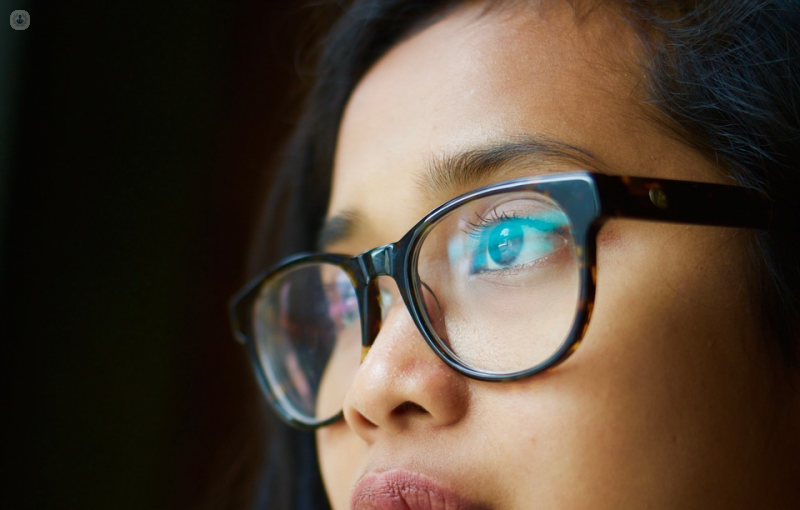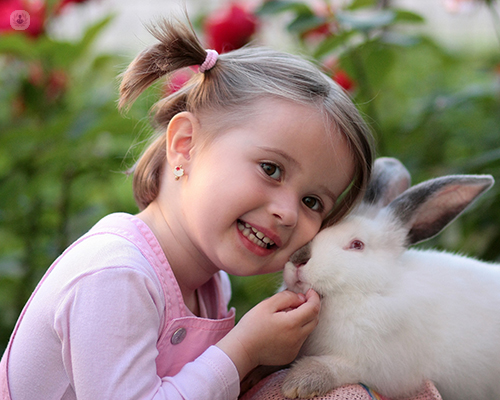What should I do if my child is rubbing their eyes constantly?
Autore:Have you recently noticed that your child is suffering from itchy eyes and is constantly scratching their eyes? Are you wondering what action to take in terms of medical advice? If so, this article may have all the reassuring information you are seeking.
Read on as revered eye specialist for children and young people, Dr Annegret Dahlmann-Noor, explains what causes allergic eye disease in children, how parents can help their children with the disease, as well as outlining when a child should be brought to an ophthalmologist.

Should I be concerned if my child is rubbing their eyes constantly? Is it a sign of a serious medical condition?
Eye rubbing is the hallmark of allergic eye disease. Eye allergies are becoming more and more common. Specialists reckon that changes in the environment, both outdoors and indoors, may contribute to this increase in numbers of children who are, today, suffering from itchy eyes.
What causes allergic eye disease in children?
The eye surface is the first line of defense against factors in the environment which could harm us or cause damage to the cornea, which is the clear window at the front of the eye. The conjunctiva, the transparent layer which covers the white part of the eyeball and the inside of the eyelid, is therefore rich in immune cells which are ready to tackle any intruders.
In children, the immune system is very active and is still learning to distinguish between harmful agents such as viruses and bacteria, and harmless agents such as pollen. An overreaction of the immune system in the conjunctiva causes allergic eye disease.
What are the main symptoms of allergic eye disease?
Typical symptoms of allergic eye disease include itching and watering. The white part of the eye becomes pink or red. In more severe forms, the child may become sensitive to light and there may be a mucus-like, ropey discharge. Small white gelatinous bumps can appear around the cornea – where the white part of the eye meets the clear part.
What are the different types of allergic eye disease?
There are four main types of allergic eye disease. The two most common forms are seasonal and perennial conjunctivitis (conjunctivitis = inflammation of the conjunctiva). The seasonal form usually begins in April/May, sometimes July/August, and is often accompanied by a runny nose. This is classic hay fever, caused by pollen.
The perennial form (perennial = all year round) causes itchy eyes throughout the year, and may be caused by allergens inside the house, such as pet hair, feathers, and dust mite.
The two other forms are rare, but are unfortunately more serious, as they can damage the cornea. Children with asthma or eczema are prone to developing atopic allergic eye disease, causing intense inflammation of the eye surface throughout the year.
Lastly, some children develop vernal keratoconjunctivitis, which can also affect the cornea. There is often a severe flare-up of inflammation in April/May and throughout the summer months, but the inflammation may not settle completely during autumn/winter.
A fifth type is giant papillary conjunctivitis, which sometimes happens to people who wear contact lenses. In this form, large fleshy lumps of inflammatory tissue develop under the upper lid, the surface which rubs against the contact lens.
How can I help my child?
Simple self-care measures can help with the itching in the four main types of allergic eye disease. Avoiding pollen when the pollen count and UV index are high and wearing wrap-around sunglasses and a cap with a sunshield can protect the eyes from exposure.
Cold lid compresses and artificial tear eyedrops from the local chemist or optometrist can bring some relief. Anti-histamine eyedrops and, if a runny nose is part of the picture, anti-histamine tablets or oral preparations can also be purchased from the chemist.
If these measures don’t control the inflammation, the family doctor/general practitioner can prescribe dual-acting eye drops which include an anti-histamine plus a mast cell stabiliser, reducing the release of histamine, which is the main substance to make the eyes itchy and inflamed.

When should I take my child to an ophthalmologist?
An ophthalmologist specialising in children’s eye conditions is the most appropriate health professional to carry out a full assessment of your child’s eye health. Children in whom the self-care measures and drops prescribed by the family doctor do not control the inflammation, should see a children’s eye doctor, and also those who have other conditions such as asthma or eczema.
Lastly, children who develop small jelly-like bumps around the cornea, the clear window at the front of the eye, should see a paediatric ophthalmologist. We will carry out a careful examination of the eye surface and can prescribe medication which is not available to general practitioners.
Dr Annegret Dahlmann-Noor is a highly esteemed eye specialist for children and young people who specialises in allergic eye disease in children amongst many other eye-related conditions. Consult with her today via her Top Doctors profile.


